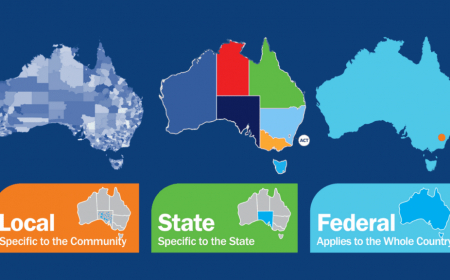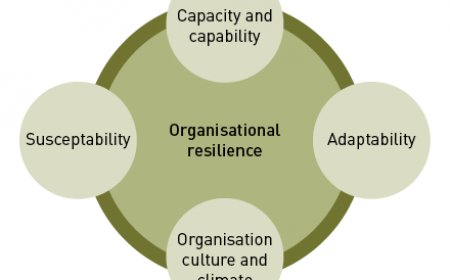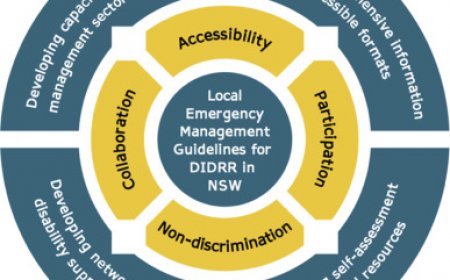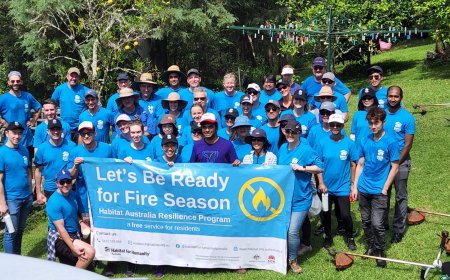Travel & Tourism: Cultural Immersion Experiences for Travelers
Discover the transformative power of cultural immersion in travel. Explore authentic experiences, engage with local traditions, and foster global understanding through meaningful interactions.
In today’s fast-paced world, where travel has become more accessible than ever, the desire for meaningful and transformative experiences is growing. Cultural immersion stands as one of the most enriching ways to explore a destination, offering travelers an opportunity to connect deeply with local traditions, customs, and lifestyles. Unlike conventional tourism that often focuses on surface-level attractions, cultural immersion allows individuals to step into the shoes of locals, fostering mutual understanding and appreciation.
The essence of cultural immersion lies in its ability to transform a journey from a mere visit to a profound exploration of humanity. It invites travelers to engage with communities, participate in rituals, taste authentic cuisines, and embrace unique ways of life. This approach not only enhances personal growth but also promotes sustainable tourism by supporting local economies and preserving cultural heritage.
As we delve deeper into this guide, we will uncover the myriad ways in which travelers can immerse themselves in diverse cultures across the globe. From participating in traditional festivals to learning indigenous crafts, every experience offers a window into the soul of a destination. Let us embark on this enriching journey together, discovering how cultural immersion can redefine the way we travel.
Why Cultural Immersion Matters in Modern Travel
In an era dominated by mass tourism and fleeting encounters, cultural immersion emerges as a beacon of authenticity. It bridges the gap between superficial sightseeing and genuine connection, allowing travelers to move beyond the role of passive observers. The importance of cultural immersion cannot be overstated—it transforms travel into a vehicle for empathy, education, and global awareness.
One of the primary reasons cultural immersion matters is its ability to foster mutual respect and understanding . When travelers actively engage with local communities, they gain insights into perspectives vastly different from their own. This exchange dismantles stereotypes, challenges preconceived notions, and cultivates a sense of shared humanity. For instance, participating in a traditional tea ceremony in Japan or joining a communal harvest in rural Peru provides firsthand exposure to values and practices that may otherwise remain abstract concepts.
Moreover, cultural immersion plays a pivotal role in preserving intangible heritage . Many traditions, languages, and crafts are at risk of fading due to globalization and modernization. By prioritizing immersive experiences, travelers contribute to the preservation of these invaluable cultural elements. Whether it’s learning the art of batik painting in Indonesia or attending storytelling sessions by elders in African villages, such interactions ensure that these practices endure for future generations.
From an economic standpoint, cultural immersion supports sustainable tourism . Instead of funneling money into large corporations, travelers who opt for locally-led tours, homestays, and artisan markets directly benefit the communities they visit. This redistribution of wealth empowers residents, encourages entrepreneurship, and reduces dependency on external resources. Additionally, when tourists show interest in local culture, it motivates younger generations to take pride in their heritage rather than abandoning it for urban opportunities.
Finally, cultural immersion enriches the traveler’s personal development. It encourages adaptability, open-mindedness, and problem-solving skills—all essential traits in our interconnected world. Navigating unfamiliar customs or communicating across language barriers builds resilience and confidence. These experiences leave lasting impressions, shaping individuals into more compassionate and informed global citizens.
Key Elements of a Successful Cultural Immersion Experience
To truly unlock the transformative potential of cultural immersion, certain key elements must be carefully considered and integrated into the travel experience. These components serve as the foundation for creating meaningful connections and ensuring that both travelers and host communities benefit from the interaction.
Authenticity
At the heart of any successful cultural immersion lies authenticity . This means engaging with real, unfiltered aspects of a culture rather than staged performances designed solely for tourists. Authentic experiences allow travelers to witness daily life as it unfolds naturally, free from artificial embellishments. For example, staying with a local family in a remote village offers far greater insight into their way of life than visiting a reconstructed “traditional” settlement created for entertainment purposes. Authenticity fosters trust and respect, enabling deeper bonds between visitors and hosts.
Respect
Equally important is the element of respect —a cornerstone of ethical cultural immersion. Travelers must approach each new culture with humility and sensitivity, recognizing that they are guests in someone else’s home. This involves adhering to local norms, dressing appropriately, and refraining from behaviors that might offend community members. Respect also extends to environmental stewardship; minimizing waste, conserving resources, and leaving no trace ensures that natural and cultural landscapes remain intact for future generations.
Engagement
Active engagement distinguishes cultural immersion from passive observation. Rather than merely watching a dance performance or admiring handicrafts, travelers should seek opportunities to participate directly. Joining a cooking class led by a grandmother in Tuscany, apprenticing under a master potter in Oaxaca, or volunteering alongside villagers during a rice-planting season exemplifies engagement at its finest. Such hands-on involvement deepens understanding and creates memories that resonate long after the journey ends.
By prioritizing authenticity, respect, and engagement, travelers can craft immersive experiences that honor the integrity of the cultures they encounter while reaping profound personal rewards.
Popular Destinations for Cultural Immersion Around the World
For those seeking to embark on a journey of cultural immersion, the world offers countless destinations where traditions thrive and communities welcome curious travelers. Below, we explore some of the most iconic locations renowned for their rich cultural tapestry, along with specific activities that provide unparalleled opportunities for meaningful engagement.
Kyoto, Japan: A Glimpse into Timeless Traditions
Kyoto stands as a living museum of Japanese heritage, where ancient customs blend seamlessly with modern life. Visitors can immerse themselves in the serene beauty of tea ceremonies , guided by masters who have honed their craft over decades. These rituals emphasize mindfulness and simplicity, offering a meditative escape from the chaos of contemporary existence. Another highlight is exploring the historic Gion district , known for its geisha culture. Walking through narrow streets lined with wooden machiya houses and observing the elegance of geiko (geishas) and maiko (apprentices) provides a rare glimpse into a world steeped in grace and tradition.
Marrakech, Morocco: Vibrant Markets and Artisanal Crafts
Marrakech pulsates with energy, inviting travelers to dive headfirst into its kaleidoscope of colors, sounds, and scents. The bustling Jemaa el-Fnaa square serves as the city's beating heart, where storytellers, musicians, and street vendors create an electrifying atmosphere. Beyond the market, visitors can partake in workshops to learn the intricate art of zellige tile-making or Berber weaving , techniques passed down through generations. These hands-on experiences not only celebrate Morocco’s artistic legacy but also support local artisans striving to preserve their craft amidst industrialization.
Oaxaca, Mexico: Culinary Delights and Indigenous Roots
Oaxaca is a treasure trove of culinary innovation and indigenous wisdom, making it an ideal destination for food enthusiasts and cultural explorers alike. Travelers can join cooking classes led by local chefs, mastering recipes like mole negro and tlayudas while gaining insight into the significance of ingredients such as corn and chili peppers in Zapotec and Mixtec cultures. Beyond gastronomy, Oaxaca hosts vibrant festivals like Día de los Muertos , where elaborate altars honor deceased loved ones. Participating in these celebrations allows visitors to connect with the spiritual essence of Mexican traditions.
Varanasi, India: Spiritual Awakening Along the Ganges
Varanasi, one of the oldest continuously inhabited cities in the world, beckons travelers seeking spiritual enlightenment. Morning boat rides along the sacred River Ganges reveal scenes of devotion as pilgrims perform rituals and bathe in its waters believed to cleanse sins. Tourists can attend Ganga Aarti ceremonies , witnessing priests chant mantras and wave flaming lamps in synchronized harmony—an awe-inspiring spectacle that encapsulates Hindu spirituality. Additionally, exploring nearby villages introduces travelers to rural Indian life, characterized by timeless agricultural practices and warm hospitality.
Luang Prabang, Laos: Monastic Life and Natural Beauty
Nestled amidst lush mountains and tranquil rivers, Luang Prabang exudes an aura of serenity perfect for introspection and discovery. One of the most cherished activities here is participating in the alms-giving ceremony , where saffron-robed monks silently walk through streets collecting offerings from locals and visitors alike. This daily ritual underscores the deep-rooted Buddhist faith central to Laotian identity. Meanwhile, excursions to nearby waterfalls and elephant sanctuaries offer chances to appreciate Laos’ breathtaking landscapes responsibly, aligning with principles of eco-conscious travel.
Each of these destinations presents unique pathways to cultural immersion, ensuring that every traveler finds resonance with the stories, traditions, and people they encounter along the way.
Types of Cultural Immersion Activities Available to Travelers
Cultural immersion offers a vast array of activities tailored to suit diverse interests and preferences, ensuring that every traveler can find an experience that resonates with them. These activities span multiple dimensions, ranging from culinary adventures to artistic workshops , festivals , and community-based projects , each providing a distinct lens through which to explore and understand a destination’s cultural fabric.
Cooking Classes: Savoring Local Flavors
One of the most universally appealing forms of cultural immersion is participating in cooking classes . Food serves as a universal language, bridging gaps between cultures and offering intimate insights into local lifestyles. In regions like Italy, Thailand, or Ethiopia, travelers can enroll in hands-on courses taught by seasoned chefs or home cooks eager to share family recipes. From kneading dough for fresh pasta in Tuscany to mastering the delicate balance of spices in Thai curries, these classes not only teach culinary techniques but also reveal the cultural significance behind each dish. Often accompanied by visits to bustling markets, participants gain a holistic understanding of ingredients and their role in shaping regional cuisines.
Art Workshops: Crafting Connections Through Creativity
For those drawn to visual expression, art workshops present an exceptional avenue for cultural immersion. Whether it’s learning batik painting in Indonesia, pottery in Mexico, or calligraphy in China, these sessions allow travelers to engage directly with centuries-old artistic traditions. Under the guidance of skilled artisans, participants experiment with materials and methods unique to the region, gaining appreciation for the craftsmanship involved. Beyond technical skills, these workshops often include storytelling about the historical context and symbolism embedded in the art form, enriching the overall experience.
Festivals: Celebrating Collective Joy
Attending local festivals offers an exhilarating plunge into the heart of a culture, where music, dance, costumes, and rituals converge in vibrant displays of unity and heritage. Events like India’s Holi Festival, Brazil’s Carnival, or Spain’s La Tomatina provide immersive environments brimming with energy and spontaneity. Travelers donning traditional attire or joining processions become active participants rather than passive spectators, forging connections with fellow revelers. Festivals often carry deep spiritual or historical meanings, making them powerful conduits for understanding societal values and collective memory.
Volunteering Opportunities: Building Lasting Bonds
Lastly, volunteering opportunities enable travelers to contribute meaningfully to communities while gaining profound insights into daily life. Programs vary widely—from teaching English in rural schools to assisting with conservation efforts in wildlife reserves—but all emphasize collaboration and mutual benefit. Volunteering fosters empathy and responsibility, encouraging participants to view challenges faced by locals through a compassionate lens. Moreover, the relationships formed during these endeavors often transcend the duration of the trip, leaving indelible marks on both volunteers and hosts.
By embracing these varied types of cultural immersion activities, travelers unlock multifaceted perspectives on the destinations they visit, transforming journeys into lifelong learning experiences.
How to Plan Your Own Cultural Immersion Trip
Embarking on a cultural immersion trip requires meticulous planning and thoughtful preparation to ensure a rewarding and respectful experience. To begin, selecting the right destination is paramount. Consider places known for their strong cultural identities and willingness to welcome outsiders. Research extensively using reputable sources such as travel blogs, government tourism websites, and academic publications to identify regions aligned with your interests. Factors like safety, accessibility, and seasonal variations should also influence your decision.
Once you’ve chosen a location, focus on finding local guides or organizations that specialize in cultural immersion programs. Look for operators committed to ethical tourism practices, prioritizing community welfare and environmental sustainability. Websites like Responsible Travel or Ecotourism.org can help locate vetted options. Alternatively, reaching out directly to local tour companies via email or social media platforms can yield personalized recommendations tailored to your preferences.
Packing appropriately is another critical aspect of preparation. Opt for clothing that respects local customs and climates—modest attire in conservative areas, layered garments for variable weather conditions, and sturdy footwear for outdoor excursions. Include essentials like reusable water bottles, sunscreen, insect repellent, and basic medical supplies. Additionally, carrying small gifts such as notebooks or toys can facilitate positive interactions with host families or children encountered during your travels.
Equipping yourself with necessary tools enhances the quality of your immersion experience. Download offline maps and translation apps to navigate unfamiliar territories confidently. Familiarize yourself with key phrases in the local language to communicate effectively and demonstrate goodwill. Investing in a portable Wi-Fi device or international SIM card ensures constant connectivity, enabling you to document your journey and stay updated on logistical details.
By combining thorough research, strategic partnerships, practical packing, and technological readiness, you set the stage for a transformative cultural immersion adventure that honors both your aspirations and the communities you aim to engage with.
Challenges and Ethical Considerations in Cultural Immersion
While cultural immersion offers unparalleled opportunities for growth and connection, it is not without its challenges and ethical considerations. One significant hurdle is navigating language barriers , which can impede communication and lead to misunderstandings. Even with translation tools, nuances in dialects and non-verbal cues may get lost, potentially causing frustration or offense. To mitigate this, travelers should invest time in learning basic phrases and gestures, demonstrating effort and respect for the local language.
Another challenge lies in overcoming stereotypes and biases . Preconceived notions about a culture can cloud judgment and prevent genuine understanding. It’s crucial for travelers to approach each interaction with an open mind, ready to question assumptions and embrace complexity. Engaging in reflective practices before and during the trip helps cultivate awareness of personal biases, fostering a more empathetic perspective.
Ethically, cultural immersion raises questions about appropriation versus appreciation . While participating in traditions or wearing traditional attire can signify respect, it risks trivializing sacred customs if done insensitively. Travelers must seek permission, understand the significance behind actions, and avoid commodifying cultural symbols for personal gain. Collaborating closely with local guides ensures activities align with community values and intentions.
Additionally, there’s the issue of power dynamics between tourists and hosts. Wealth disparities can create uncomfortable situations where locals feel pressured to cater to visitor expectations. Practicing humility, offering fair compensation, and prioritizing reciprocity helps balance these dynamics, ensuring interactions remain mutually beneficial.
Addressing these challenges thoughtfully paves the way for responsible and impactful cultural immersion experiences that honor both parties involved.
Best Nearby Attractions
When planning a culturally immersive trip, exploring nearby attractions can significantly enhance your experience. These sites often complement the primary focus of your journey, providing additional layers of historical, artistic, or natural context. For instance, if you're staying in Kyoto, consider visiting the Arashiyama Bamboo Grove, a serene escape where towering bamboo stalks sway gently in the breeze, offering a tranquil contrast to the city's bustling temples. Similarly, Marrakech travelers might venture to the Majorelle Garden, a vibrant oasis designed by French painter Jacques Majorelle and later restored by Yves Saint Laurent, showcasing exotic plants and striking blue architecture.
In Oaxaca, Monte Albán stands as a testament to ancient Zapotec civilization, with sprawling ruins perched atop a mountain offering panoramic views of the valley below. Varanasi visitors should not miss Sarnath, the site of Buddha's first sermon, featuring impressive stupas and archaeological museums that deepen understanding of Buddhist philosophy. Lastly, near Luang Prabang, Kuang Si Waterfall captivates with its tiered cascades and turquoise pools, perfect for swimming and photography, while nearby Pak Ou Caves house thousands of Buddha statues, reflecting Laos' spiritual devotion.
These nearby attractions enrich your itinerary, allowing you to weave together diverse threads of history, nature, and spirituality into a cohesive tapestry of exploration.
Best Nearby Restaurants
Exploring local cuisine is an integral part of any cultural immersion experience, and dining at nearby restaurants offers a delicious gateway into the heart of a destination’s culinary traditions. In Kyoto, indulge in kaiseki meals at Kikunoi , a Michelin-starred establishment renowned for its exquisite multi-course dinners that highlight seasonal ingredients with artistic presentation. Alternatively, savor casual yet authentic dishes at Ippudo Ramen , where rich broths and perfectly cooked noodles satisfy comfort food cravings.
Marrakech boasts a plethora of eateries serving Moroccan delicacies. Visit Le Jardin , nestled within a lush garden setting, for tagines infused with aromatic spices and freshly baked bread served alongside olive oil and honey. For street food enthusiasts, Jemaa el-Fnaa square transforms at night into a lively open-air market, offering everything from grilled meats to sweet pastries like chebakia.
In Oaxaca, Los Danzantes combines innovative techniques with traditional flavors, presenting modern interpretations of mole sauces paired with mezcal cocktails crafted from locally sourced agave. Meanwhile, Mercado 20 de Noviembre invites adventurous eaters to sample regional specialties like chapulines (grasshoppers) and tlayudas, enjoyed amidst vibrant market stalls.
Varanasi’s culinary scene reflects its spiritual essence; try El Parador for thalis bursting with flavor, or relish lassi drinks at Blue Lassi Shop , famous for its creamy yogurt blends topped with nuts and spices. Finally, Luang Prabay’s Tamarind restaurant specializes in Laotian fare, dishing up classics like larb and tam mak hoong in a cozy ambiance overlooking the Nam Khan River.
These dining spots promise unforgettable gastronomic adventures, connecting you to the soul of each locale through taste and texture.
Weather
Understanding the weather patterns of your chosen destination is crucial for planning a successful cultural immersion trip. Each region presents unique climatic conditions that influence both daily activities and overall comfort levels. In Kyoto, Japan, spring (March to May) brings mild temperatures and cherry blossoms in full bloom, creating picturesque settings ideal for outdoor exploration. However, summers can be hot and humid, while winters occasionally see snowfall, particularly in January and February.
Marrakech experiences a semi-arid climate, with scorching summers peaking around July and August when temperatures soar above 40°C (104°F). Spring and autumn offer more moderate conditions, making them optimal times for visiting markets and historical sites without enduring extreme heat. Rainfall is minimal throughout the year, though occasional showers occur during winter months.
Oaxaca enjoys a subtropical highland climate characterized by warm days and cool nights. The dry season runs from November to April, offering pleasant weather for hiking and participating in outdoor festivities. Conversely, the rainy season spans May to October, bringing afternoon thunderstorms that refresh the landscape but may disrupt travel plans.
Varanasi faces extreme variations between seasons, with sweltering summers reaching up to 45°C (113°F) and chilly winters dropping to near freezing. Monsoon rains dominate from June to September, flooding streets and altering river currents, so timing your visit outside these periods ensures smoother navigation.
Lastly, Luang Prabang benefits from a tropical monsoon climate, featuring distinct wet and dry seasons. November to February marks the peak tourist period due to cooler temperatures and clear skies, whereas heavy rainfall dominates June to August, impacting accessibility to certain attractions.
By aligning your itinerary with favorable weather windows, you maximize enjoyment and minimize disruptions during your cultural immersion journey.
Accessibility
Ensuring accessibility is a vital consideration when planning a cultural immersion trip, particularly for travelers with mobility challenges or special needs. Many destinations have made strides in improving infrastructure to accommodate diverse requirements, yet thorough research remains essential to guarantee a seamless experience.
In Kyoto, public transportation systems like buses and trains are generally wheelchair-friendly, equipped with ramps and designated spaces. Major attractions such as Kinkaku-ji (Golden Pavilion) and Fushimi Inari Shrine feature accessible pathways, though some areas may still pose difficulties due to uneven terrain or steep steps. Renting motorized scooters or hiring private vehicles can further enhance convenience for those needing additional support.
Marrakech poses greater challenges regarding accessibility, given its labyrinthine medinas and historic architecture lacking elevators or wide entrances. However, newer hotels and riads increasingly incorporate adaptive features, and guided tours tailored for disabled travelers are emerging. Navigating the Medina requires careful planning, often necessitating assistance from local guides familiar with alternative routes.
Oaxaca demonstrates progressive efforts toward inclusivity, with many museums and cultural centers offering ramps and audio guides for visually impaired visitors. Public buses now include low-floor models, facilitating easier boarding. Rural areas, however, may lack comprehensive facilities, requiring reliance on private transport services.
Varanasi’s ancient ghats and narrow alleyways present obstacles for wheelchair users, yet initiatives like accessible boat rides along the Ganges provide inclusive alternatives. Select guesthouses and hotels cater specifically to guests with disabilities, ensuring comfortable accommodations despite the city’s inherent structural limitations.
Luang Prabang showcases commendable progress in accessibility, with paved roads leading to key landmarks like Wat Xieng Thong and Mount Phousi. Hotels frequently offer ground-floor rooms and grab bars in bathrooms, while airport transfers accommodate various mobility aids efficiently.
Prioritizing accessibility not only enhances individual experiences but also promotes equitable participation in cultural immersion activities, fostering inclusivity across all facets of travel.
How to
Successfully embarking on a cultural immersion journey involves several actionable steps designed to maximize engagement and respect for local customs. Begin by thoroughly researching your destination, focusing on cultural norms, etiquette, and any specific protocols expected of visitors. Utilize online forums, travel guides, and documentaries to gather comprehensive insights, paying particular attention to dress codes, greeting practices, and taboos.
Next, establish connections with local communities before arrival. Reach out to community leaders, tour operators, or expatriate groups via social media platforms to express your intent and seek advice. Building rapport beforehand facilitates smoother integration and demonstrates genuine interest in their way of life. Additionally, consider enrolling in language courses or downloading translation apps to bridge communication gaps effectively.
Upon arrival, adopt a mindset of curiosity and humility. Ask permission before photographing individuals or sacred sites, respecting privacy and cultural sensitivities. Participate actively in offered activities, whether it’s joining a traditional dance class or assisting with daily chores in a homestay setting. Document your experiences thoughtfully, capturing moments that reflect mutual respect and shared joy.
Finally, reflect regularly on your interactions and observations. Journaling or discussing experiences with fellow travelers helps process emotions and deepen understanding. By approaching cultural immersion with intentionality and openness, you create lasting memories that honor both your journey and the communities you engage with.
Conclusion
Cultural immersion represents a transformative approach to travel, transcending superficial sightseeing to forge profound connections with local communities. By prioritizing authenticity, respect, and active engagement, travelers unlock unparalleled opportunities to explore traditions, cuisines, and lifestyles that define a destination’s unique identity. From Kyoto’s tranquil tea ceremonies to Marrakech’s vibrant markets, each experience enriches personal growth while promoting sustainable tourism practices.
Through careful planning, ethical considerations, and a commitment to inclusivity, cultural immersion becomes not just a journey but a celebration of humanity’s diversity. As we embrace these principles, we contribute to preserving intangible heritage, supporting local economies, and fostering global understanding. Let us continue to champion cultural immersion as a pathway to meaningful exploration, ensuring that every step taken leaves a positive imprint on the world.
10 FAQ’s with Answers
-
What is cultural immersion in travel?
- Cultural immersion involves engaging deeply with local traditions, customs, and lifestyles to gain authentic insights into a destination’s culture.
-
Why is cultural immersion important?
- It fosters mutual respect, preserves heritage, supports sustainable tourism, and enhances personal development through meaningful interactions.
-
How do I choose a destination for cultural immersion?
- Select places known for strong cultural identities, considering factors like safety, accessibility, and alignment with your interests.
-
What activities can I participate in during cultural immersion?
- Activities include cooking classes, art workshops, attending festivals, and volunteering in community projects.
-
How can I prepare for a cultural immersion trip?
- Research extensively, pack appropriately, find local guides, and equip yourself with necessary tools like translation apps and offline maps.
-
What challenges might I face during cultural immersion?
- Challenges include language barriers, stereotypes, ethical concerns about appropriation, and navigating power dynamics between tourists and hosts.
-
Are there ethical considerations in cultural immersion?
- Yes, prioritize respecting local customs, avoiding cultural appropriation, and ensuring interactions remain mutually beneficial.
-
How does weather impact cultural immersion trips?
- Weather influences activity planning and comfort levels; align your itinerary with favorable weather windows for optimal experiences.
-
Is cultural immersion accessible for travelers with disabilities?
- Accessibility varies by destination; research facilities and plan accordingly to ensure inclusive participation in activities.
-
How can I document my cultural immersion experience responsibly?
- Seek permission before photographing individuals or sacred sites, and focus on capturing moments that reflect mutual respect and shared joy.
What's Your Reaction?
 Like
0
Like
0
 Dislike
0
Dislike
0
 Love
0
Love
0
 Funny
0
Funny
0
 Angry
0
Angry
0
 Sad
0
Sad
0
 Wow
0
Wow
0











































